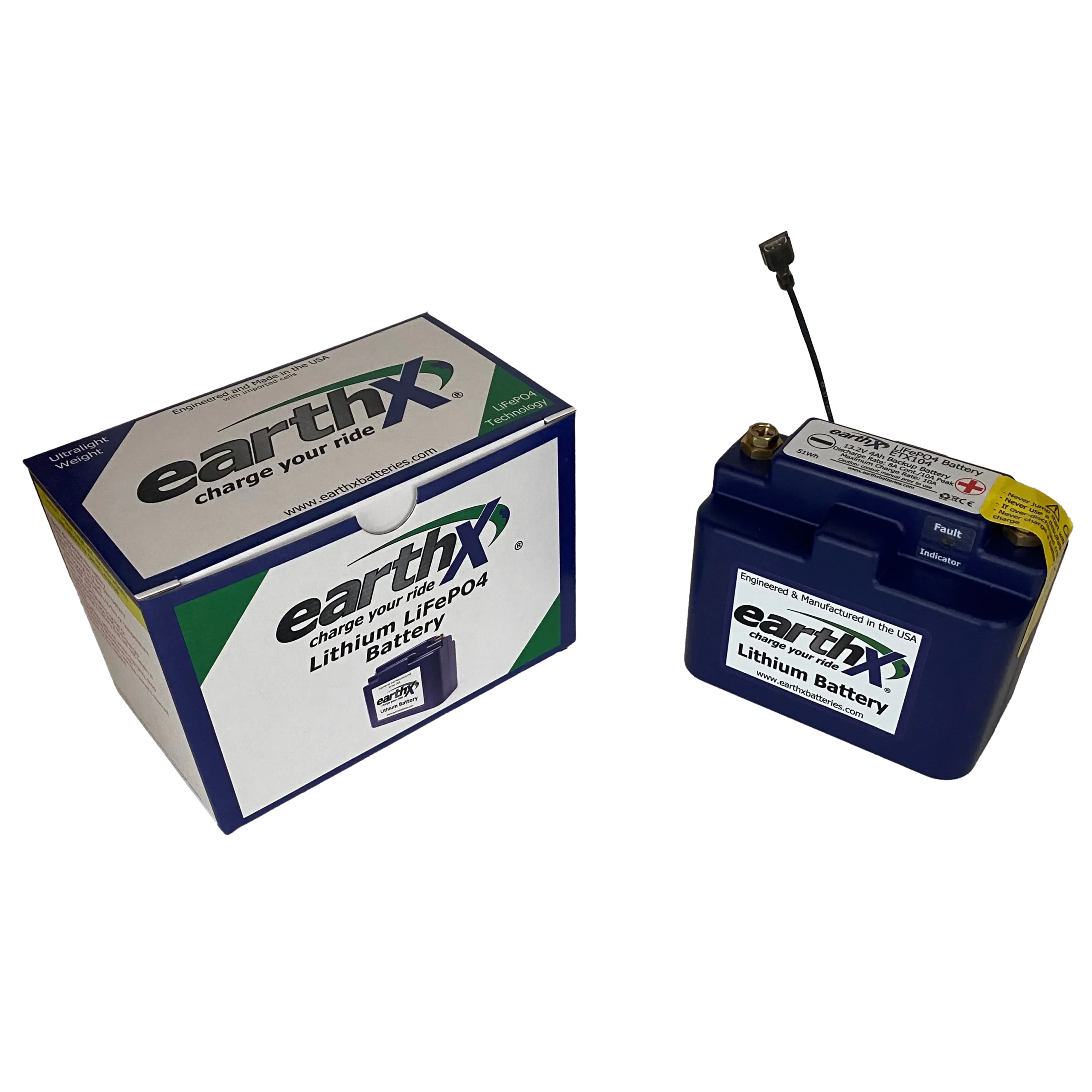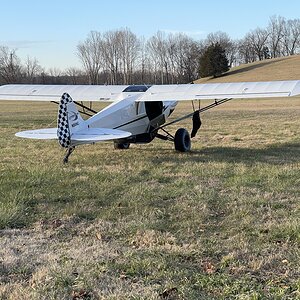- Joined
- Oct 31, 1996
- Posts
- 1,279
- Type aircraft owned
- Carbon Cub FX-3
- Base airport
- KFCI
- Ratings
- COMM, IFR, MEL, SEL
The NTSB preliminary report is attached and another article linked below. For aircraft owners with Light Speed ignition systems (or any electrically driven ignition system) I think this is an important one to learn from and discuss.
Excerpt:
One question I have is "how old was the ignition backup battery" as this was a kit built Carbon Cub and did this battery come with the kit at time of order or was it purchased closer to date of completion as this is an item we're supposed to replace annually at condition inspections. I don't know if CubCrafters ships batteries with the kit.
I'll also add that I don't personally trust the ignition backup battery and there is a test that can be done and is supposed to be done to load test the battery which I bet 99% of us don't do. During runup this battery is tested (backup ignition switch) and it runs down fast. I hope I never have to rely on it.
My understanding is when the ignition backup battery fails it will fall through to the starter battery. I welcome any CubCrafters' owners to chime in to help all better understand the system. With that said, it seems to be your best starter battery is insurance and that's why I have the EarthX in mine. The "upgraded" (now standard) SBS-J16 has always been weak in my experience. Mike Patey did a video on how turbine failure in how the EarthX saved him and FlightChops also did a video along the same line.
So let's discuss. First off, the sad situation of a ring terminal failing. The cheapest item in the entire aircraft cost the aircraft. There are a lot of spades and terminals like this in the aircraft and from what I hear it's the most common cause of failures. I had one separate in my coil pack saga, a slight tug test can ensure they are secure. Is there such a thing as marine grade terminals and if so maybe they should be used instead instead of these cheap connectors we see as commonly used in the build. It may be wise not only to inspect the ring terminal that failed in this accident but consider replacing it with a marine grade terminal. I always use a flashlight during my preflight to look into the side vents to inspect coil pack connections. I'll now focus also on this terminal going forward.
Did the pilot do wrong by waiting for the starter battery to draw down first before going to ignition backup (ign backup battery)? When is the right time to engage the ignition backup battery? It seems the pilot's plan here may be a good one to not simultaneously draw down both batteries? Something I'd like to better understand.
In addition, I recently did a review and adjustment to the items that appear in my EIS sidebar when I realized I could add an additional one as recently posted here which added AMPS as it's a critical item to monitor in my opinion. I had my "field" breaker pop once and amps went negative and I caught it right away. I believe this was caused by plugging a USB accessory (GoPro) into my GMA 245R over the rear seat USB port.
There has been some discussion on voltage cutoff settings programmed into the G3X I believe, maybe @Cactus Charlie can help us better understand as I think this comes up when EarthX's are installed and how this is affected.
Unfortunate incident especially for a kit builder that spent years building their dream shattered by a $.25 part.

Excerpt:
The airplane departed from the Thompsonville Airport (7Y2), Thompsonville, Michigan, about 0917. Shortly into the local area flight, the pilot noticed a flicker on the Garmin G3X Touch display, but a low voltage warning never appeared. The pilot then looked at the engine monitoring display which indicated the alternator was not charging and it showed 12.8 volts direct current (VDC). The pilot immediately started a climbing turn back to 7Y2. After reaching about 4,000 ft, he tried several methods to get the alternator working including cycling both the field and main alternator circuit breakers several times. He checked the voltage in the backup ignition battery which read 12.8 VDC.
Since he had about a 15-minute flight back to 7Y2, he decided to save the backup ignition battery and run off the main battery until he received a low voltage warning. The airplane was on final approach when a low voltage warning appeared on the Garmin G3X Touch display. The pilot switched over to the backup ignition battery, he watched as the voltage dropped from 12.8 VDC down to 0 VDC, and the engine sustained a total loss of engine power. The pilot noticed that the backup battery was faulty, and it only lasted about one or two minutes.
One question I have is "how old was the ignition backup battery" as this was a kit built Carbon Cub and did this battery come with the kit at time of order or was it purchased closer to date of completion as this is an item we're supposed to replace annually at condition inspections. I don't know if CubCrafters ships batteries with the kit.
I'll also add that I don't personally trust the ignition backup battery and there is a test that can be done and is supposed to be done to load test the battery which I bet 99% of us don't do. During runup this battery is tested (backup ignition switch) and it runs down fast. I hope I never have to rely on it.
My understanding is when the ignition backup battery fails it will fall through to the starter battery. I welcome any CubCrafters' owners to chime in to help all better understand the system. With that said, it seems to be your best starter battery is insurance and that's why I have the EarthX in mine. The "upgraded" (now standard) SBS-J16 has always been weak in my experience. Mike Patey did a video on how turbine failure in how the EarthX saved him and FlightChops also did a video along the same line.
So let's discuss. First off, the sad situation of a ring terminal failing. The cheapest item in the entire aircraft cost the aircraft. There are a lot of spades and terminals like this in the aircraft and from what I hear it's the most common cause of failures. I had one separate in my coil pack saga, a slight tug test can ensure they are secure. Is there such a thing as marine grade terminals and if so maybe they should be used instead instead of these cheap connectors we see as commonly used in the build. It may be wise not only to inspect the ring terminal that failed in this accident but consider replacing it with a marine grade terminal. I always use a flashlight during my preflight to look into the side vents to inspect coil pack connections. I'll now focus also on this terminal going forward.
Did the pilot do wrong by waiting for the starter battery to draw down first before going to ignition backup (ign backup battery)? When is the right time to engage the ignition backup battery? It seems the pilot's plan here may be a good one to not simultaneously draw down both batteries? Something I'd like to better understand.
In addition, I recently did a review and adjustment to the items that appear in my EIS sidebar when I realized I could add an additional one as recently posted here which added AMPS as it's a critical item to monitor in my opinion. I had my "field" breaker pop once and amps went negative and I caught it right away. I believe this was caused by plugging a USB accessory (GoPro) into my GMA 245R over the rear seat USB port.
There has been some discussion on voltage cutoff settings programmed into the G3X I believe, maybe @Cactus Charlie can help us better understand as I think this comes up when EarthX's are installed and how this is affected.
Unfortunate incident especially for a kit builder that spent years building their dream shattered by a $.25 part.
Accident Cub Crafters CCX-2000 Carbon Cub N40DT, Sunday 7 September 2025
On September 7, 2025, about 0932 eastern daylight time, a CubCrafters Carbon Cub EX airplane, N40DT, sustained substantial damage when it was involved in an accident near Thompsonville, M...
asn.flightsafety.org






